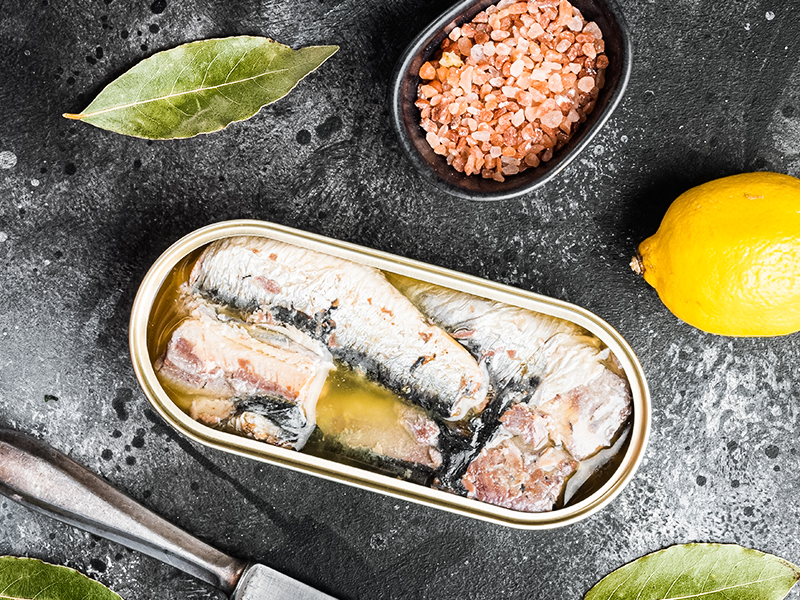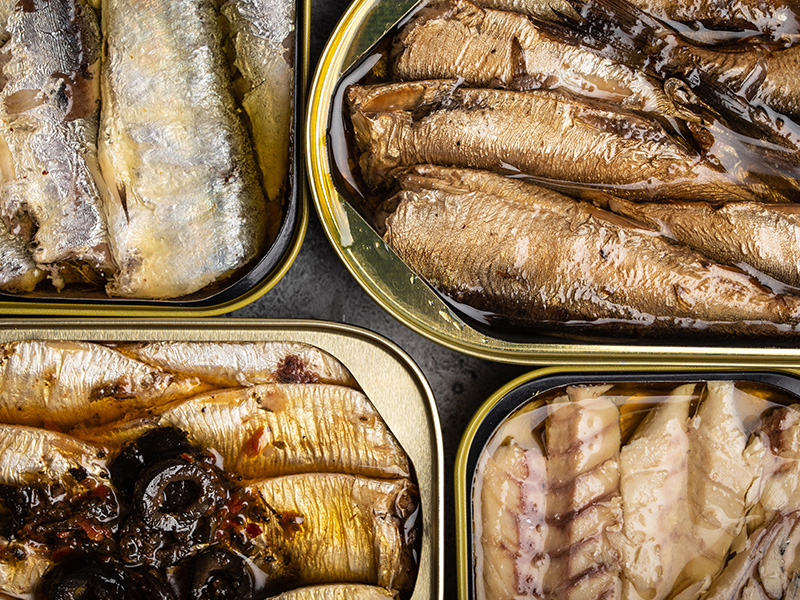The export volume of canned fish is increasing day by day
Canned fish is a ready to eat canned product made from fresh or frozen fish through processing, canning, seasoning, sealing, sterilization, and other processing processes. According to different processing methods, canned fish can be divided into categories such as braised, eggplant juice, fresh fried, steamed, smoked, oil immersed, and water immersed.
Canned fish has good nutritional value, is easy to preserve and store, is easy to carry, maintains a good taste, and has low energy, calories, and nutrients. It can meet the needs of consumers for health, high nutrition, and calorie reduction, and has become an important part of their diet.
Since the advent of canned fish, there has been a strong demand for market consumption, and fishermen have continued to increase their catches of tuna and sardine. Overfishing is a serious situation, which has damaged the ecological balance of the marine biodiversity center to a certain extent. In this context, promoting the progress of artificial aquaculture technology is one of the main means for the development of global tuna, sardine and related processing industries.
With the advancement of technology, the development of fish jars has been rapid, and various processing methods have been subdivided, such as braising, eggplant juice, fresh frying, steaming, smoking, oil immersion, water immersion, etc. Canned fish can be used to stir fry vegetables and become a substitute for meat.
In addition to fish, in recent years, various types of seafood have also been canned, such as canned abalone, which can be mixed with rice and noodles, or stewed with other vegetables to make a thick seafood soup. Canned garlic scallops and clam meat are also great dishes for cooking, preserving the freshness and sweet taste of seafood.
Canned fish enterprises can explore more and better marketing methods through their in-depth understanding of the industry. How to focus on customers, provide more convenience to customers, reduce total customer costs, and communicate better with customers are all things that fish can enterprises need to think deeply about. Promote the upgrading and structural adjustment of the canned fish industry, and shift it from labor-intensive to technology intensive. To achieve higher benefits by increasing product added value.
 The production method of canned fish comes from the canned f
The production method of canned fish comes from the canned f
 Analysis of the Development Prospects of the Global Canned F
Analysis of the Development Prospects of the Global Canned F
 The export volume of canned fish is increasing day by day
The export volume of canned fish is increasing day by day
 The Canning Method of Tomato Juice Mackerel Can Manufacturer
The Canning Method of Tomato Juice Mackerel Can Manufacturer


